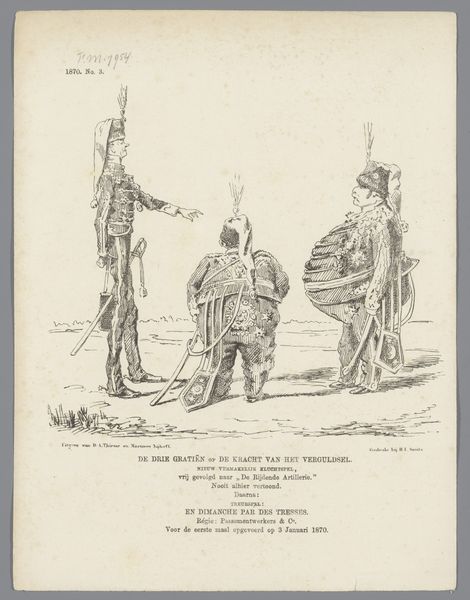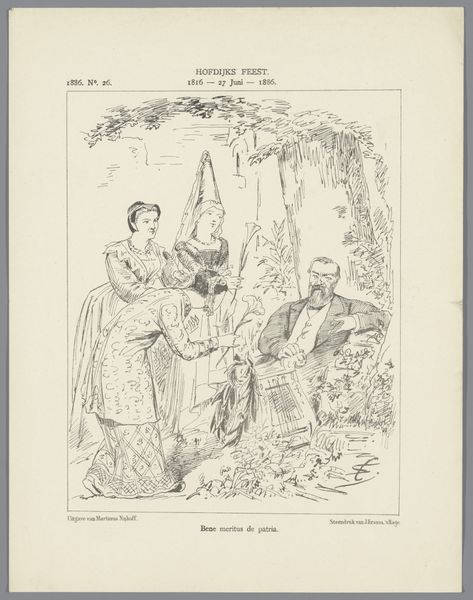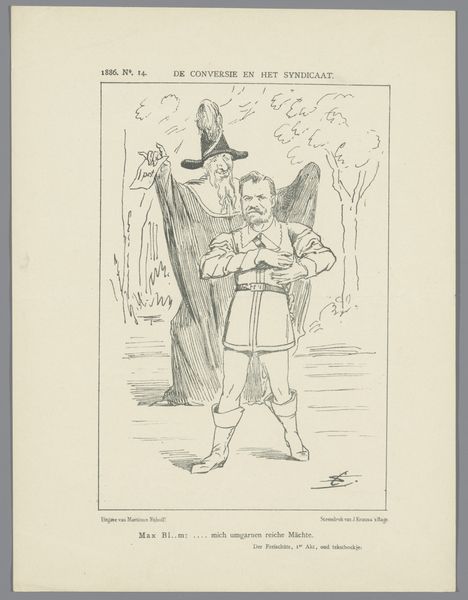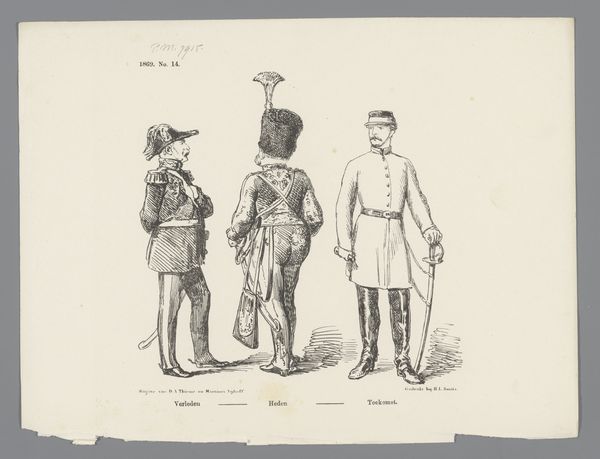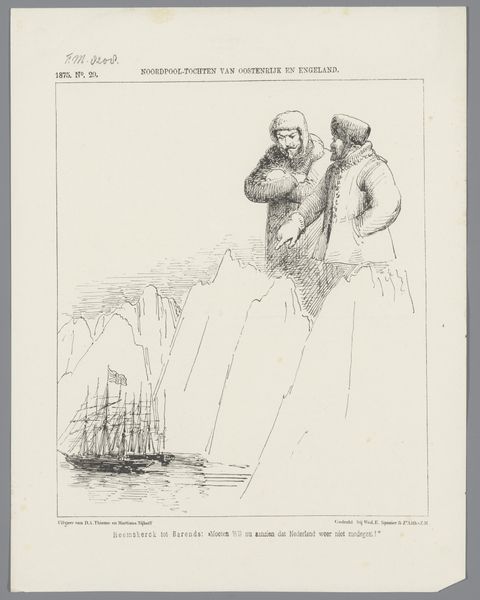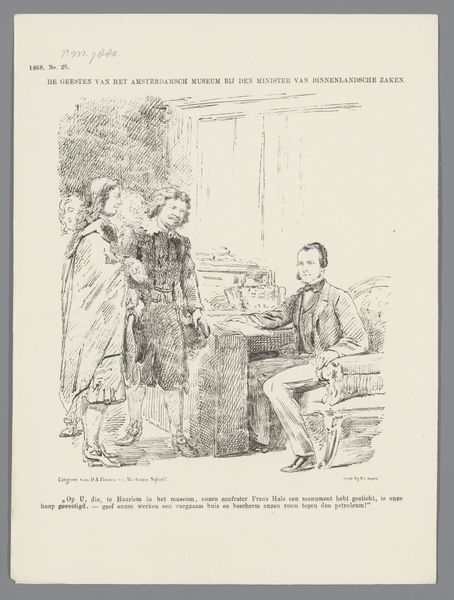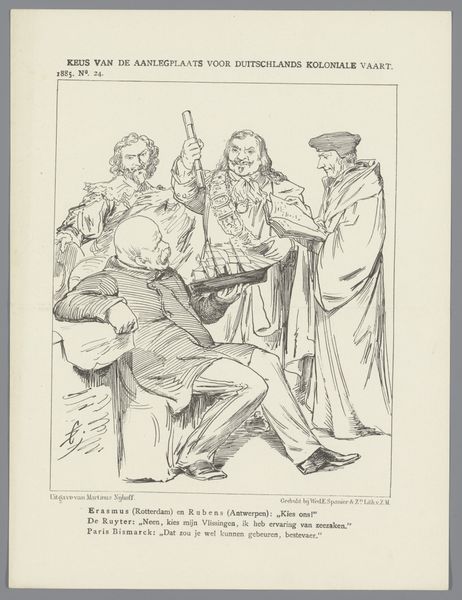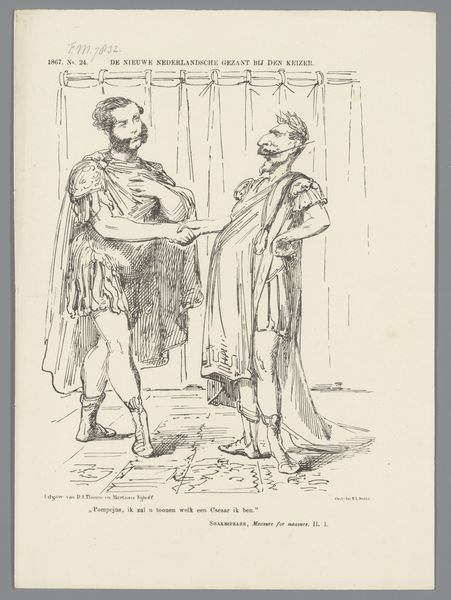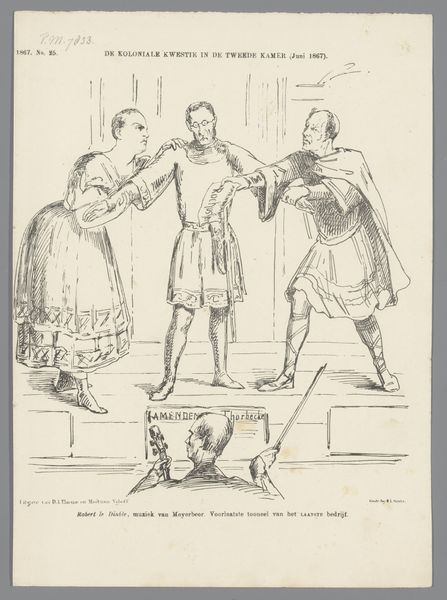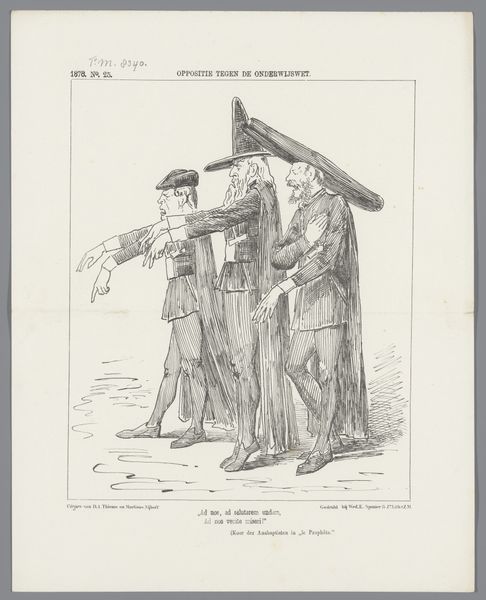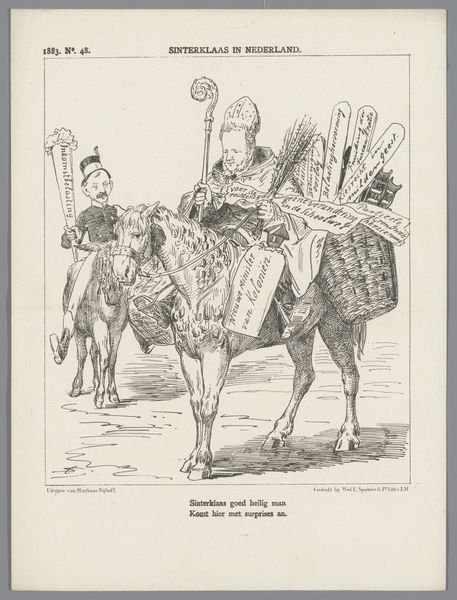
Spotprent op de eed van de drie ministers om de meerderheid te volgen, 1872 1872
0:00
0:00
Dimensions: height 275 mm, width 215 mm
Copyright: Rijks Museum: Open Domain
Curator: Welcome. Let's examine "Spotprent op de eed van de drie ministers om de meerderheid te volgen, 1872" (Cartoon on the Oath of the Three Ministers to Follow the Majority, 1872), an etching by Johan Michaël Schmidt Crans. What catches your eye immediately? Editor: Well, the first thing I notice is the almost theatrical grouping of these figures. The setting looks sparse, rendered with minimal line work and what reads as a stark lack of detail in the rocky crags, which gives the impression of a stage backdrop, cheap canvas pulled taut behind these fellows. Curator: It's fascinating you say "theatrical" because I immediately focus on how Schmidt Crans employed an etching technique. The linear precision speaks to the printmaking process and suggests a calculated reproducibility, designed for broad consumption, a message for the masses if you will. The thin, crisp lines convey the idea that each impression could share the same, unaltered impact. Editor: Precisely! And think about what is suggested here via costume. We have these men in, essentially, fancy dress. This clothing denotes, perhaps, historical weight, calling to mind earlier eras of power dynamics. What does it signify? Perhaps that these politicians play a role ordained by figures who came before them, thus setting up a lineage for these present behaviours? The central figure raising his hand… what oath is he swearing? Curator: Consider the social context of 1872. The Dutch government was navigating complex political shifts. Etchings like this one provided accessible commentary and criticism of policy and politicians. Notice the varying styles of garb and how each Minister's garments, in particular, suggest status or class via the textiles implied, while equally appearing artificial or outmoded, almost humorous in presentation. This draws attention to not just what they represent as ministers but their relationship with broader social fabrics. Editor: It is also clear in the body language of each figure that they are unified and unified *for a purpose*, and that the garb is intended to impress. This etching serves as a document in terms of artistic practices and the function of the artist, but it shows that power comes in many shapes and forms - including, and maybe especially, symbolic. Curator: I find it enlightening how tracing the artist's etching technique allows us to understand dissemination in society. Editor: Indeed! And considering the symbolism within the scene encourages questions of lasting societal structures of governance and responsibility, echoing throughout the ages, even now.
Comments
No comments
Be the first to comment and join the conversation on the ultimate creative platform.
